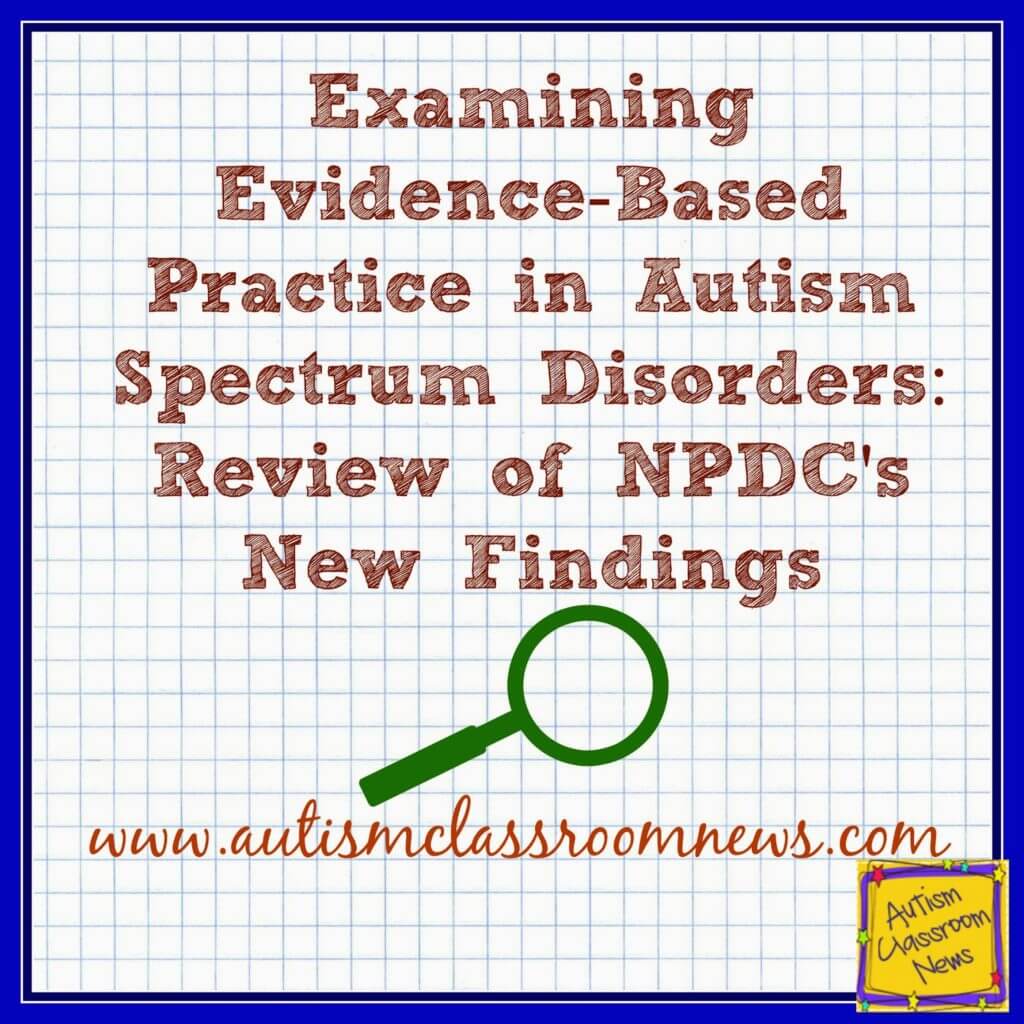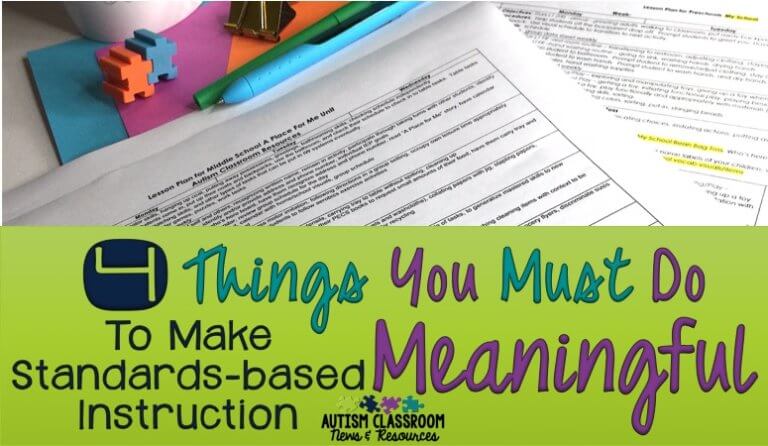Sharing is caring!
Those of you who follow my Facebook Fan Page may have seen my update that the National Professional Development Center for Autism Spectrum Disorders came out this week with an updated report on evidence-based practice for individuals with ASD. As promised, I wanted to take a few posts to talk about the outcomes of their review.
I wrote about evidence-based practice and some of the difficulties with determining what is an evidence-based practice in ASD in this post. If you aren’t familiar with the NPDC for ASD, I highly recommend their site for information and tools. Last week they published a new review of the evidence on educational interventions for students with ASD. They focused only on educational approaches, so it does not include medical approaches. They reviewed the evidence overall in 2010 and now they have re-reviewed a larger set of literature with more stringent standards. The change in the standards and the inclusion of a longer time period in the review means that some things were added as evidence-based practices (EBP) and some that were classified as EBP were not longer considered EBPs. They also combined and reorganized some of the categories.
I highly recommend that you download and read the report, but I’m going to spend the next few posts summarizing the results and talking a little about them. They did a great job of being transparent with how they reviewed articles. I had a great opportunity to participate in that process (and get CEUs for my BCBA-D) and I really liked the system they used. So, I’m very excited that they have also published the tools they used to review so I can now use it with my graduate students in teaching them how to review research.
So to kick us off, let’s look at the changes that came out of the report. The following practices were ADDED as evidence-based practice because more evidence accumulated over the extended time period or since the 2010 review. (I’ll write more about the dates of research that was reviewed for the different reports in another post). I’ve linked the categories to posts I have done related to them in the past.
- Cognitive-Behavioral Interventions (I will write a post specifically about this one as it covers lots of areas)
- Exercise
- Modeling
- Scripting
- Structured Play Group
- Technology-Aided Instruction and Intervention–this is actually a new category that subsumed some other categories from the last report








